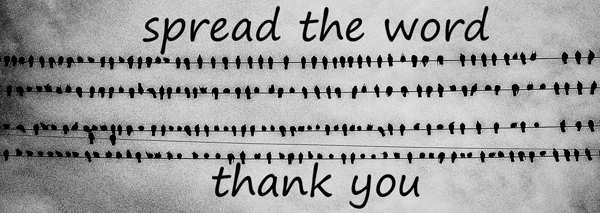I am Yaneer
Bar-Yam, Professor and founding president of the
New England Complex Systems Institute. I work on
mathematical analyses to identify the variables
necessary and sufficient to describe a complex
problem at large scale. … Science … is about what
we see and learn about the world around us. It is
about life itself. All of us have formative
experiences in life. For me one of them was the
loss of my sister, Aureet, who was two years older
than me. She cared deeply about helping people.
For years afterwards I drove her car, on the
steering wheel there was attached the “serenity
prayer” that many of you surely know: “God grant
me the Serenity, To accept the things I cannot
change, Courage to change the things I can, And
Wisdom to know the difference.”
In science as in
life, the most important question is: Can we make
it better? … Today I want to tell you that the
pandemic has been mischaracterized as something we
can’t control, even can’t do anything about. …
Here, today, we have a historic opportunity to
change the direction of society from failure,
causing illness, death and disability, on a spiral
of devastation, to a new path that will lead to an
exit from this catastrophic condition. The place
to start is in the workplace …. Economy depends on
health. Infection followed by infection,
disability accumulating from long covid organ
damage after multiple infections, is untenable.
There are 5
pillars of prevention: Masking, Ventilation,
Testing, Social distancing, and Vaccination. Each
of these has multiple levels. From poor to
outstanding. First: Masks: From cloth and surgical
masks that might have been somewhat effective
early in the pandemic, to N95s that help now, to
elastomeric respirators that would stop almost all
infection, to PAPRs that could stop infection
entirely.
Second:
Ventilation & HEPA purification according to
conventional standards help significantly.
Elevating standards makes it even better, and the
risks can be minimal in many locations if we place
HEPA purifiers near workers or customers based
upon measured airflows.
Third: Testing is
the most widely accepted measure. Reactive
symptomatic and exposure testing has a significant
effect. Proactive frequent screening, which in
workplaces can and is being done once daily at
some locations including fire departments at $1
per test using LAMP testing, can cause
transmission to decrease even for Omicron, and can
make risk minimal if it is done twice. Saliva
tests are fine.
Fourth: Social
distancing ranges from avoiding gatherings all the
way to lockdowns.
Fifth:
Vaccination in conjunction with other measures
could have stopped the pandemic, but over reliance
on vaccination alone undermined its utility
because of new variants that would not have arisen
if we effectively used other measures to reduce
transmission.
What is important
is that a combination of these five can be crafted
based upon receptiveness and technology adoption
and there are many choices that all work. Note
that even though treatments exist, variants
undermine them, they are not adequately available
or equitably distributed, they do not always work,
and have significant side effects. As far as we
know, the only way to stop long covid disability
is to stop infection.
… We need
comprehensive protection. Regulation exists in the
complexity of multidisciplinary knowledge. Each
discipline has its own assumptions. Medical and
biological sciences are different from social and
engineering knowledge. Biologists may focus on
vaccines, but high mask quality is no less a game
changer. And RT-LAMP testing is now easy to do,
costs $1 per test, and can be scaled immediately
to 100s of millions per week.
Naysayers distort
science, technology and economics. It is important
to remember that scientists in general are passive
observers. Biologists see biological phenomena not
socio-technical advances or collective action, and
surely not the opportunities of global enterprise
engaging in coordinated action. To know what can
be done, use a startup mentality and galvanize
multidisciplinary teams to meet the challenge.
In this light
passivity makes no sense. We have advanced since
1918. We have better science, technology, and
communication to coordinate action. We provided
people with clean water, we can provide clean air.
Just as the virus can mutate and gain an
advantage, we can innovate to defeat it. Our
economic freedom driven culture has a knee jerk
reaction: A desire for freedom from regulations.
There are those who may say to themselves, I
didn’t have these expenses before, I shouldn’t
have them now.
We must recognize
that there is a pandemic. The true costs of the
pandemic are manifest in both acute illness and in
post acute effects including cardiovascular
events, symptoms of long covid and its organ
damage and disability. Brain fog will cost workers
and employers. We will surely pay for shortsighted
views that focus on comparatively minuscule costs
of masking, ventilation, testing, sick leave and
supporting other precautions. …
Pandemics should
not be thought of as waves, but as a fire. We know
the solution is to put them out. Similarly for
pandemics getting things to be a bit better is not
enough. Can we do it? Multiple times we achieved
cases going down. When cases go down, focus and
put the fire out. We have been suffering from the
pandemic for two years, complaining about its
effect on the economy. Should we suffer for
another two? Or more? Should we sacrifice lives
pretending it is inevitable, or doesn’t exist? The
data shows, strong action can reduce cases
dramatically in 4-6 weeks. Then we only need to
prevent a new wave, so the fire is not rekindled.
We just need to start. We have the knowhow, we
need the will. I hope you will recognize not just
the challenge but the opportunity to make a
difference. Seize this opportunity. Thank you.



